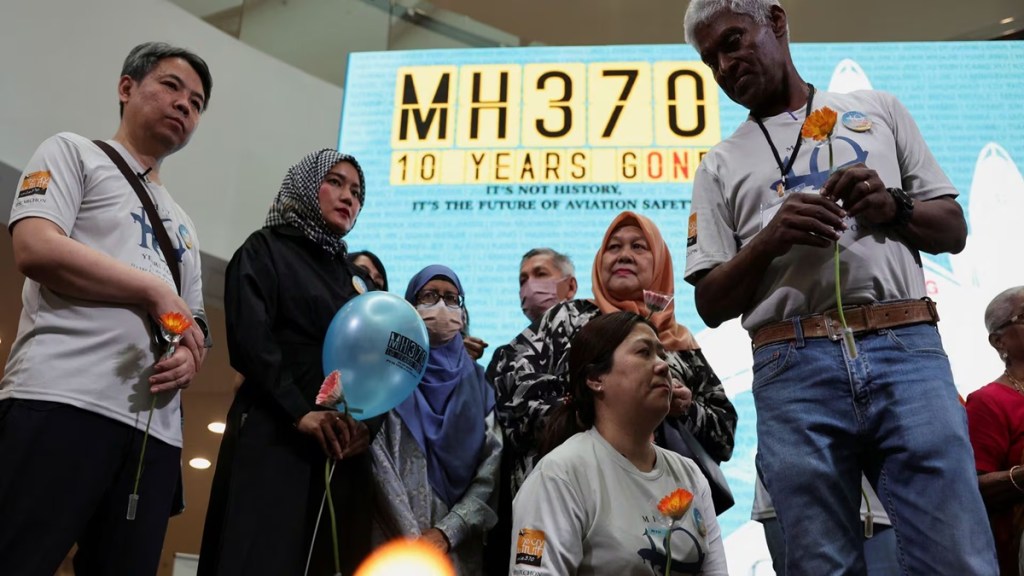Ten years have passed since Malaysian Airlines Flight MH370 vanished from the skies, leaving behind a trail of unanswered questions, speculation, and heartache for the families of the 239 people on board. The incident, which occurred on March 8, 2014, remains one of the most baffling mysteries in modern aviation history. However, in a new turn of events, the Malaysian government recently announced the possibility of resuming the search for the missing aircraft. This decision follows a proposal from an American marine robotics company, which previously attempted to locate the plane in 2018.
Despite extensive multinational efforts to search the southern Indian Ocean, where the aircraft is suspected to have crashed, no significant findings have been made. Only a few small fragments that later washed ashore have been recovered, with no bodies or substantial wreckage ever being located.
Here’s an overview of what is known about this tragic aviation incident:
On March 8, 2014, the Beijing-bound aircraft vanished from the radar approximately 39 minutes after it departed from Kuala Lumpur. Before leaving Malaysian airspace, the pilot transmitted a final radio message to Kuala Lumpur, saying “Good Night Malaysian Three Seven Zero.” However, upon entering Vietnam’s airspace, the plane did not make any contact with the air traffic controllers in Ho Chi Minh City. Shortly afterward, the plane’s transponder, a crucial communication system conveying the aircraft’s location to air traffic control, ceased functioning.
Military radar detected the aircraft making a sharp turn back over the Andaman Sea before disappearing entirely. Satellite data indicated that the plane continued flying for several hours, possibly until it exhausted its fuel supply. It is presumed to have crashed in a remote area of the southern Indian Ocean.
Theories regarding the disappearance of MH370
Numerous theories have emerged regarding the events aboard the aircraft, ranging from hijacking to cabin depressurization or power failure. However, there were no distress calls, ransom demands, adverse weather conditions, or evidence of technical malfunctions. In a 2018 report, Malaysian safety investigators absolved all passengers and crew of wrongdoing but did not rule out the possibility of “unlawful interference.”
Malaysia’s government has suggested that deliberate actions were taken to sever communications with ground control and divert the plane from its intended course. Despite extensive investigations and search efforts, the true cause of the aircraft’s disappearance and the fate of its passengers and crew remain elusive mysteries.
Why is it so hard to find MH370 debris?
An explanation for the lack of success in the exhaustive search efforts lies in the challenge of pinpointing the precise location to focus on. The Indian Ocean, being the third largest ocean on the planet, presented search teams with a formidable task. They navigated through adverse weather conditions and contended with average depths reaching approximately 4 kilometers (2.5 miles). While aircraft disappearances in deep-sea environments are infrequent, locating remains can prove exceptionally difficult.
According to data from the Aviation Safety Network, over the last five decades, numerous aircraft have vanished without a trace, adding to the complexity and mystery surrounding such incidents.
MH370 Disappearance: New Evidence, Renewed Investigation
The Malaysian government has consistently maintained its stance on resuming the search efforts, stipulating that it will do so solely in the presence of credible new evidence. Presently, it is contemplating a proposal from the company Ocean Infinity, which promises a fresh search for the aircraft by using advanced technology. However, it is still not known if the company has any fresh evidence at hand.
Even though so much time has gone by, many families that were affected by the disappearance of their loved ones, are still looking for answers. They stress that resolving the mystery of MH370 is necessary, not just for personal closure but also to be prepared for the risk of future aviation disasters.
Furthermore, the tragedy has spurred advancements in aviation safety protocols. Beginning in 2025, the International Civil Aviation Organization will mandate that aircraft be equipped with a device capable of broadcasting their position every minute in the event of an emergency. This measure aims to facilitate swift response efforts by authorities in the event of a catastrophe. Importantly, these devices will be automatically triggered and cannot be manually deactivated. However, it is worth noting that this regulation applies exclusively to newly manufactured aircraft, leaving thousands of older planes still in service unaffected by the mandate.
(With AP Inputs)


